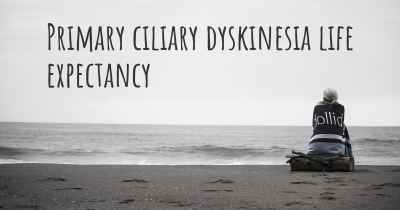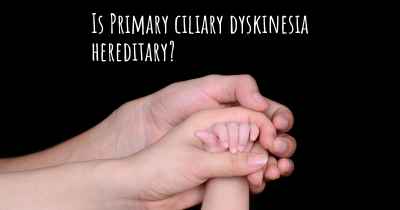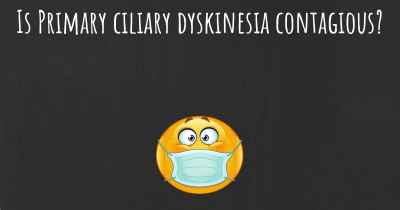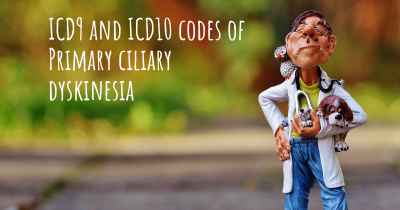Is it advisable to do exercise when affected by Primary ciliary dyskinesia? Which activities would you suggest and how intense should they be?
See if it is advisable for people with Primary ciliary dyskinesia to practice sports and which ones are the most recommended if you have Primary ciliary dyskinesia
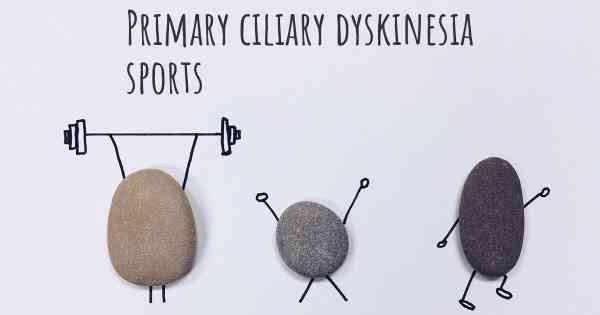
Exercise Recommendations for Primary Ciliary Dyskinesia
Primary ciliary dyskinesia (PCD) is a rare genetic disorder that affects the function of cilia, which are tiny hair-like structures that line the airways, sinuses, and other organs in the body. These cilia play a crucial role in clearing mucus and debris from the respiratory tract. As a result of impaired ciliary function, individuals with PCD often experience recurrent respiratory infections, chronic cough, and other respiratory symptoms.
Exercise can be beneficial for individuals with PCD, as it can help improve lung function, enhance cardiovascular fitness, and promote overall well-being. However, it is important to approach exercise with caution and tailor it to the individual's specific needs and limitations. Here are some recommendations for exercise for individuals affected by PCD:
1. Consult with a Healthcare Professional
Before starting any exercise program, it is crucial to consult with a healthcare professional who is familiar with PCD. They can assess your specific condition, provide personalized recommendations, and ensure that exercise is safe and appropriate for you.
2. Choose Low-Impact Activities
Due to the respiratory symptoms associated with PCD, it is generally recommended to engage in low-impact activities that do not put excessive strain on the lungs. These activities can help improve cardiovascular fitness without exacerbating respiratory symptoms. Some suitable options include:
- Walking: Walking is a low-impact exercise that can be easily incorporated into daily routine. Start with shorter distances and gradually increase the duration and intensity.
- Cycling: Cycling is another low-impact activity that can be beneficial for individuals with PCD. It provides a cardiovascular workout while minimizing stress on the joints.
- Swimming: Swimming is an excellent choice for individuals with PCD, as the buoyancy of water reduces the impact on the joints and allows for gentle exercise. It also helps improve lung capacity and promotes airway clearance.
- Yoga: Yoga combines gentle movements, stretching, and deep breathing exercises, which can help improve lung function, flexibility, and relaxation.
3. Gradually Increase Intensity
When starting an exercise program, it is important to begin at a comfortable intensity and gradually increase it over time. This allows your body to adapt and reduces the risk of overexertion. Listen to your body and adjust the intensity based on your individual capabilities and any symptoms you may experience.
4. Focus on Breathing Techniques
Individuals with PCD often have difficulty clearing mucus from their airways, which can lead to respiratory symptoms. Incorporating breathing techniques into your exercise routine can help improve lung function and promote airway clearance. Deep breathing exercises, pursed lip breathing, and huffing techniques are some examples that can be beneficial.
5. Consider Airway Clearance Techniques
In addition to exercise, individuals with PCD often require regular airway clearance techniques to help remove mucus and maintain lung health. These techniques, such as chest physiotherapy, positive expiratory pressure devices, and oscillatory positive expiratory pressure devices, should be performed as prescribed by your healthcare professional. They can be incorporated into your daily routine alongside exercise.
6. Stay Hydrated
Proper hydration is essential for individuals with PCD, as it helps maintain thin mucus consistency and facilitates its clearance. Drink an adequate amount of water before, during, and after exercise to stay hydrated.
7. Listen to Your Body
It is important to pay attention to your body's signals during exercise. If you experience any unusual or worsening symptoms, such as shortness of breath, chest pain, or dizziness, stop exercising and seek medical attention if necessary.
Remember, every individual with PCD is unique, and the exercise recommendations may vary depending on the severity of the condition and individual capabilities. Always consult with your healthcare professional for personalized advice and guidance.
Posted Mar 6, 2017 by pcdwhat 1100
